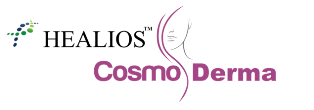What is ketoconazole?
Ketoconazole is an imidazole medicine used to treat fungal infections. Ketoconazole binds to the fungal p450 enzymes and stops the cells making ergosterol, the main component of the cell wall.
Ketoconazole is effective against a broad spectrum of fungi including:
- Dermatophytes (tinea infections)
- Yeasts such as candida and malassezia.
Ketoconazole 2% Cream (Nizoral Cream®) daily and 2% Shampoo (Nizoral®, Sebizole®) twice weekly are used for seborrhoeicdermatitis, a common scaly rash affecting scalp and face. They are subsidised on prescription, but can also be obtained over the counter at a chemist. Topical ketoconazole is safe.
Oral ketoconazole
Ketoconazole reaches the surface of the skin through normal blood circulation, sweat and sebum (skin oils). Very high concentrations of the drug develop within the skin, so it is effective in treating superficial fungal infections.
The oral dose of ketoconazole in adults is 200 to 400 mg daily, taken for two to eight weeks (a single dose may be effective for pityriasisversicolor). Nail infections are treated for up to twelve months.
The dose in children is usually 50 mg per day for those weighing less than 20 kg and 100mg daily for those 20-40 kg.
The oral medication is somewhat better absorbed when it is taken with a fatty meal or acidic drink (e.g. orange juice). It is bound to proteins such as albumin in the circulating blood and is widely distributed in body tissues. It takes three to ten hours for half of the medication to be cleared from the blood stream. The rest is eliminated in faeces and urine either unchanged or after conversion by the liver into inactive compounds.
Side effects of oral ketoconazole
The main concern with ketoconazole is the risk of liver problems, usually after it has been taken for prolonged periods (weeks). Side effects may include:
- Nausea and vomiting.
- Constipation.
- Headache.
- Dizziness.
- Abnormal liver function tests (15%); severe hepatitis can occur in 1:10,000 patients. It may rarely be fatal.
- Adrenal insufficiency: ketoconazole reduces the body’s production of cortisol.
- Allergic skin rash including urticaria.
- Endocrine effects including enlarged breasts (in males), alopecia and impotence. It may exacerbate adrenal insufficiency (Addison disease)
Ketoconazole should not be taken in pregnancy. Although only excreted in tiny amounts from breast milk, it should only be taken by a breast-feeding mother if essential.
Drug interactions of ketoconazole.
Ketoconazole is a p-glycoprotein inhibitor and can have serious interactions with other medications.
- Ketonazole should not be taken with the HMG Co-A reductase inhibitor simvastatin, and the dose of atorvastatin should be reduced. Toxicity results in muscle pain and weakness, which may be serious. If long-term treatment with a statin and ketoconazole is required, suitable alternatives are fluvastatin, pravastatin and rosuvastatin.
- It is also contraindicated with the anticoagulant, dabigatran because of the risk of bleeding.
As ketoconazole needs acid for its absorption, antacids, H2 antagonists (cimetidine, famotidine, ranitidine) and omeprazole should not be taken for 2 hours after ketoconazole.
Ketoconazole interacts with alcohol rather like disulfiram (Antabuse®) and can cause severe nausea and vomiting.
Ketoconazole may increase the concentration of these drugs and enhance their effect:
- Warfarin
- Methyl prednisolone
- Cisapride
- ciclosporin
- Midazolam, triazolam
- Busulfan
- Antidiabetic sulphonylurea medication (tolbutamide, glibenclamide, gliclazide, glipizide
The following drugs markedly decrease the concentration of ketoconazole:
- Rifampicin
- Isoniazid
- Phenytoin
- Carbamazepine
Ketoconazole is not thought to interact with the oral contraceptive pill.

 7975288129 / 7483528607
7975288129 / 7483528607
